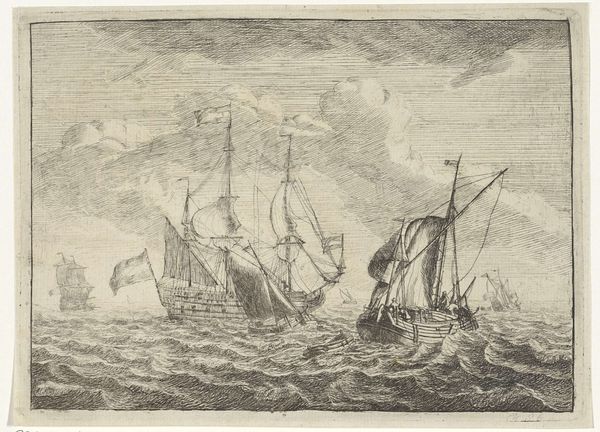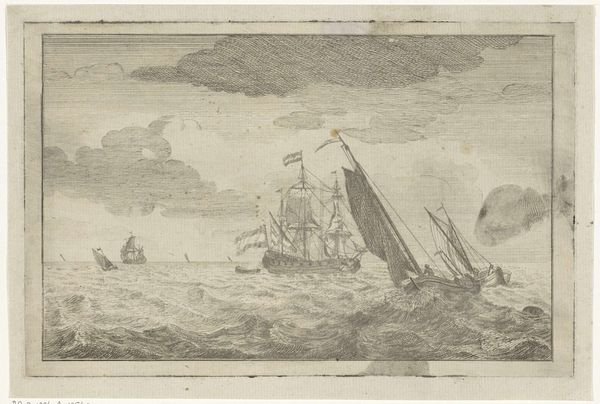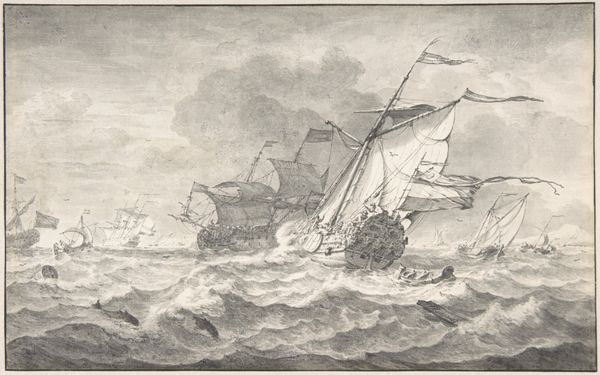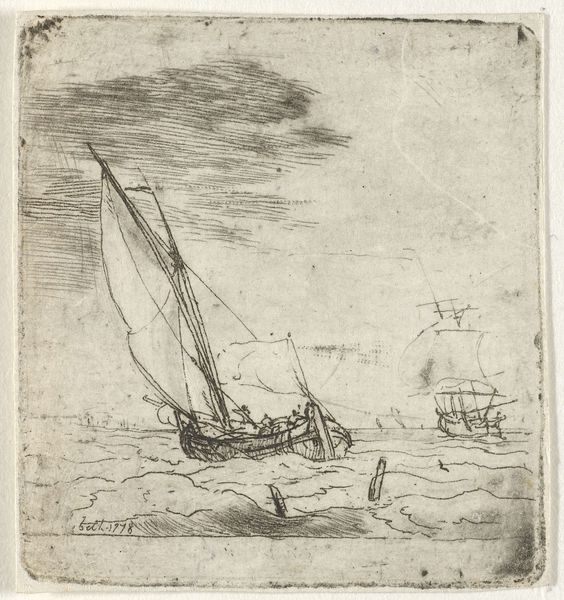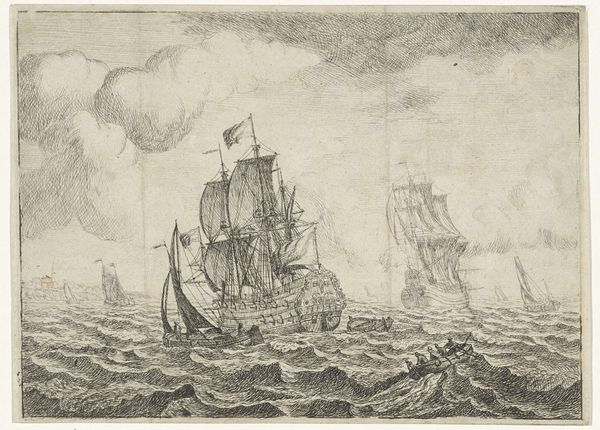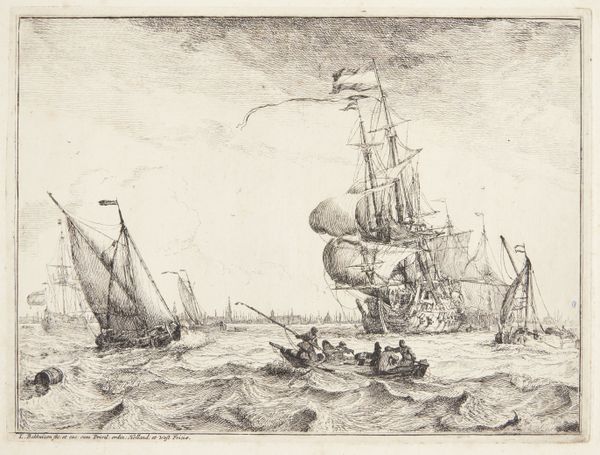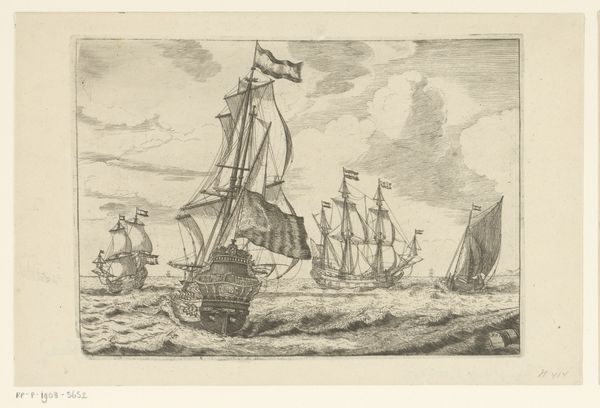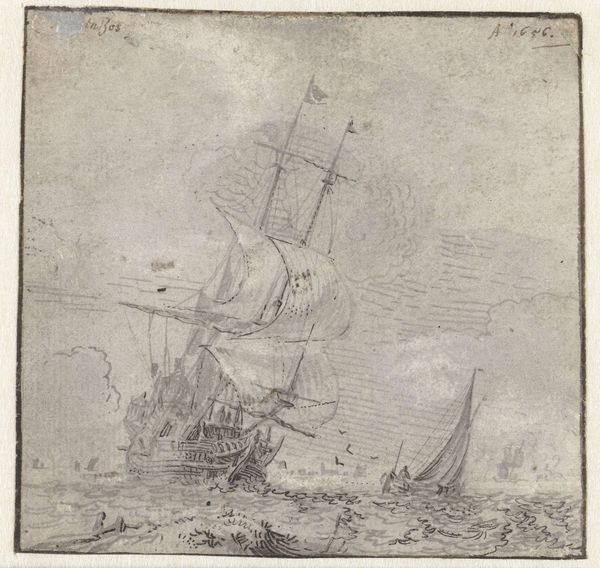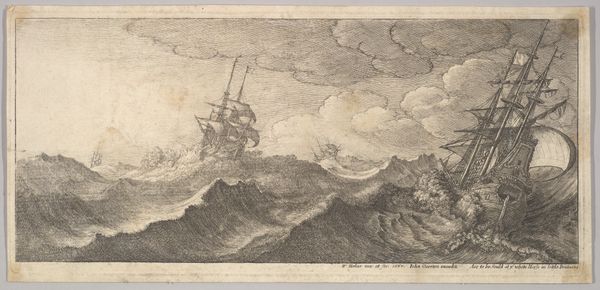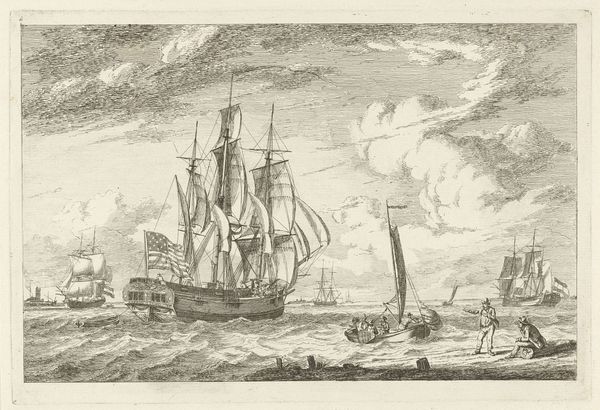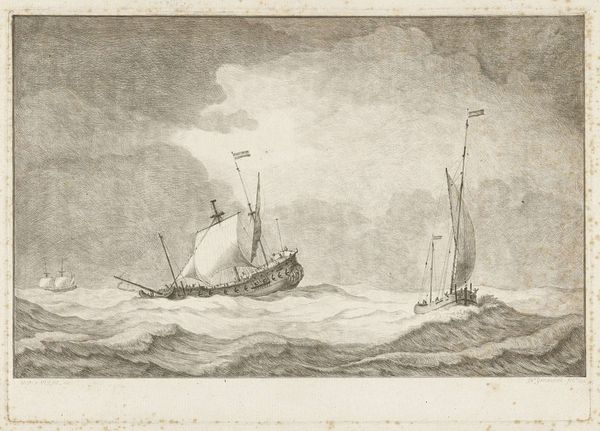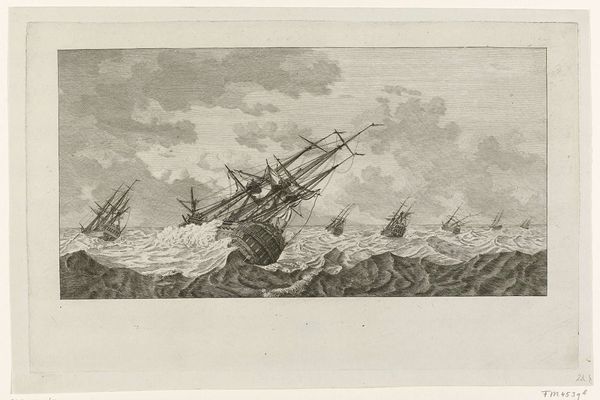
print, etching
#
baroque
# print
#
etching
#
landscape
#
etching
#
figuration
#
line
#
genre-painting
Dimensions: height 151 mm, width 207 mm
Copyright: Rijks Museum: Open Domain
Curator: This etching, likely dating from between 1689 and 1760, is titled *Zeegezicht met schip in nood*—Seascape with Ship in Distress—and is attributed to Adam Silo. What are your initial impressions? Editor: A dramatic scene, certainly! The chaotic energy in the waves immediately draws the eye. It makes me think about the etcher's work process in reproducing that texture. It looks like quite a feat. Curator: Indeed. Consider that prints such as these served as accessible and distributable forms of imagery. Seascape imagery especially rose in prominence reflecting the Netherlands’ political and economic dependence on naval trade during the Golden Age. Think about the function of something like this in the social life of its time. Editor: That's right. Silo, with his extensive training and even direction of the Russian fleet, had an insider's understanding of shipbuilding and seafaring that influenced not only subject matter but the etching technique, itself. Look at the intricacy in the ship's rigging; that's a ton of labor intensive mark making, requiring specialized skills and tools. It raises the status of the "print" beyond just informational material. Curator: Precisely. Maritime painting occupied an important civic space and moral position in Dutch society. In the context of the period, a shipwreck could carry symbolic meaning—a warning against the hubris of seafaring ambitions, perhaps, or simply a memento mori reminding viewers of life’s fragility. But it also bolstered a fascination with global exploration and Dutch power abroad. Editor: It's the layering and cross-hatching of those finely etched lines creating areas of darker tone, and also creating the illusion of depth, which I think speaks to the artist's expertise in manipulating materials to evoke mood. It certainly does invite introspection of these broader themes. The physicality of that craft can really give you an appreciation for printmaking. Curator: Absolutely. The work’s reproduction points towards an evolving public sphere, with its own set of shared concerns. These prints helped codify an understanding and an idealization of Dutch identity and empire. Editor: Considering the material process—how these skills are transferred and passed down—we can perhaps gain even deeper insight into these moments in time. It shifts our focus to thinking about all the labor involved, too. Curator: A perspective that adds richness to our interpretation. This really shows how something as outwardly simple as a line etching on paper embodies rich and complex narratives about maritime ambition, cultural anxiety, and the rise of a public audience for art. Editor: Indeed. There is more here than meets the eye at first glance!
Comments
No comments
Be the first to comment and join the conversation on the ultimate creative platform.
